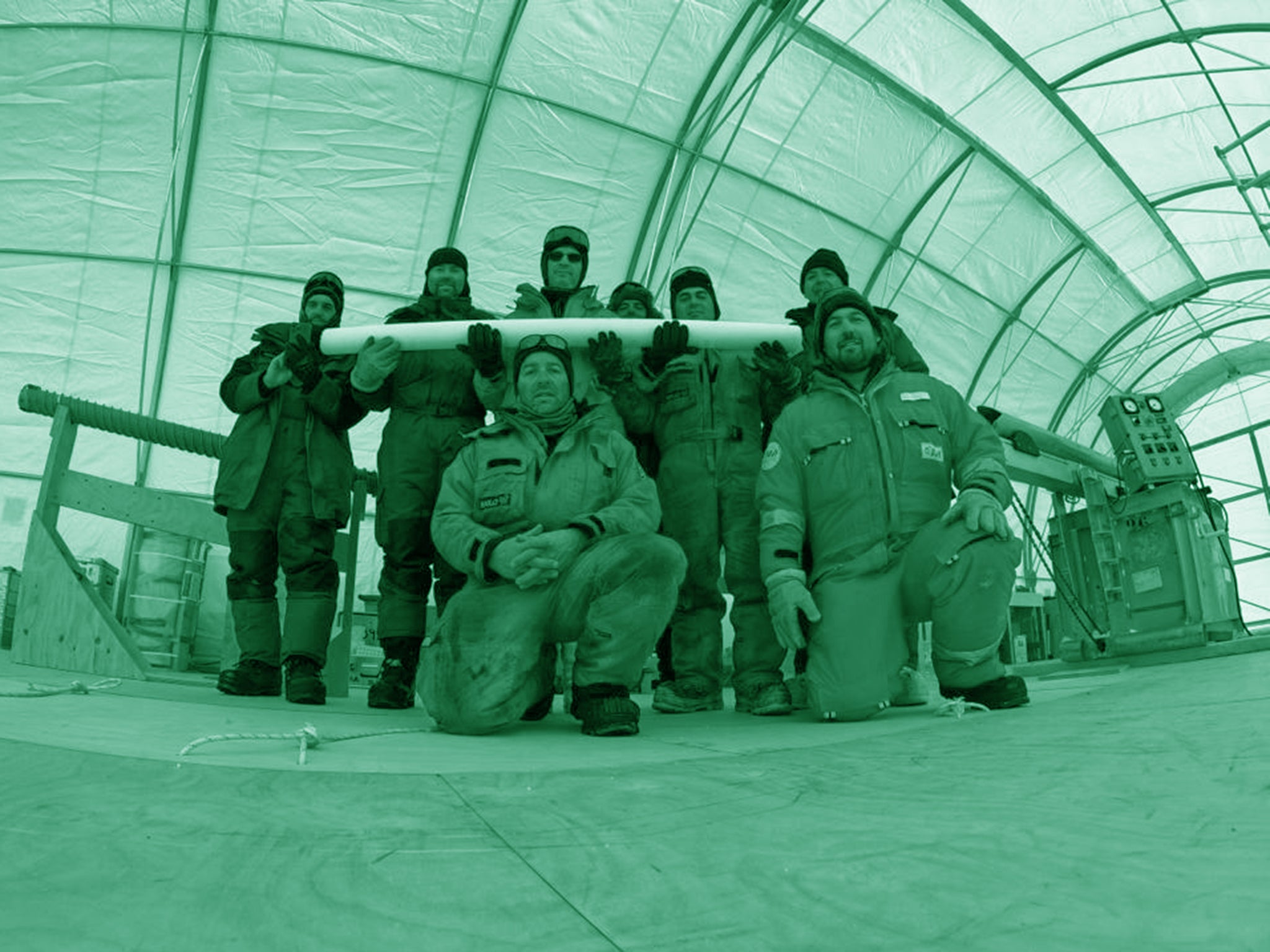How 1.5 million-year-old ice from Antarctica will help predict future of climate change
Seven-year project hopes to reveal information about effect of rising temperatures on concentration of greenhouse gases in atmosphere

Your support helps us to tell the story
From reproductive rights to climate change to Big Tech, The Independent is on the ground when the story is developing. Whether it's investigating the financials of Elon Musk's pro-Trump PAC or producing our latest documentary, 'The A Word', which shines a light on the American women fighting for reproductive rights, we know how important it is to parse out the facts from the messaging.
At such a critical moment in US history, we need reporters on the ground. Your donation allows us to keep sending journalists to speak to both sides of the story.
The Independent is trusted by Americans across the entire political spectrum. And unlike many other quality news outlets, we choose not to lock Americans out of our reporting and analysis with paywalls. We believe quality journalism should be available to everyone, paid for by those who can afford it.
Your support makes all the difference.A team of scientists are preparing to drill into 1.5 million-year-old ice in east Antarctica in the hope of discovering more about the history of climate change.
Scientists believe the information uncovered by studying ancient ice can help predict how the planet will continue to respond to rising temperatures.
They also hope to discover what caused the planet to enter in and out of ice ages in the past.
It is part of a seven-year project which began in 2019 and will cost 11 million euros, funded by the European Commission. This particular campaign is set to end in January 2022.
It is coordinated by Carlo Barbante, director of the Institute of Polar Sciences of the National Research Council of Italy (CNR-ISP) and professor at Ca’ Foscari University of Venice.
It follows a previous project, ending in 2008, which saw scientists extract and analyse an 800,000-year-old ice core.
But how will this project help to predict the future of climate change, and would does it entail?
What does the project entail?
Known as Beyond EPICA, the project also involves twelve international research institutes from around the world.
An international team of glaciologists, engineers and technicians will work at an altitude of 3,233 metres above sea level, over 1,000 km away from the coast, and will experience average Antarctic summer temperatures of -35C.
Once the drilling site was made fully operational, the system was tested and a temporary storage cave constructed in the snow to protect the first ice samples.
The team hopes to achieve an average coring rate of 170 metres per week.
On Saturday, the team extracted their first firn core at the site.
It is expected to take a total of six years to drill and analyse the ice.
A statement from Beyond EPICA said the seven-year project will see two decisive moments for the history of climate science.
“The first, will be drilling the pilot hole from which the ice core will be extracted,” it said.
“The second, will be the extraction of the first layers of ice by the end of this campaign.”
Where is the ice located?
The drilling site, Little Dome C, is an area of 10 km2, located 40km from the Italian-French Concordia Station, on the east Antarctic plateau.
This is one of the most extreme places on the Earth: winters there are long and sunless and temperatures are usually the lowest on earth.
Temperatures hardly rise above −25C (−13F) in summer and can fall below −80C (−112F) in winter.
How can ancient ice help to predict the future of climate change?
The ice contains tiny air bubbles which reveal the concentration of greenhouse gases in the atmosphere at the time they became trapped, such as methane and carbon dioxide.
By analysing the ice, scientists will be able to look it how rising and falling temperatures impact the atmosphere, allowing them to “gain a correct perspective on what the world is currently experiencing with climate change, and adopt suitable mitigating strategies,” lead scientist Carlo Barbante said.
The last project which analysed 800,000-year-old ice, revealed that greenhouse gas concentrations went down during the ice age and began to rise as the climate began to warm, Euro News reported.
It will also help scientists understand why climate cycles, which last around 100,000 years on average, used to be much shorter, causing the earth to dip in and out of ice ages at a much faster pace.
Mr Barbante added: “We believe this ice core will give us information on the climate of the past and on the greenhouse gases that were in the atmosphere during the Mid-Pleistocene Transition (MPT), which happened between 900,000 and 1.2 million years ago.
“During this transition, climate periodicity between ice ages changed from 41,000 to 100,000 years: the reason why this happened is the mystery we hope to solve.”
Join our commenting forum
Join thought-provoking conversations, follow other Independent readers and see their replies
Comments